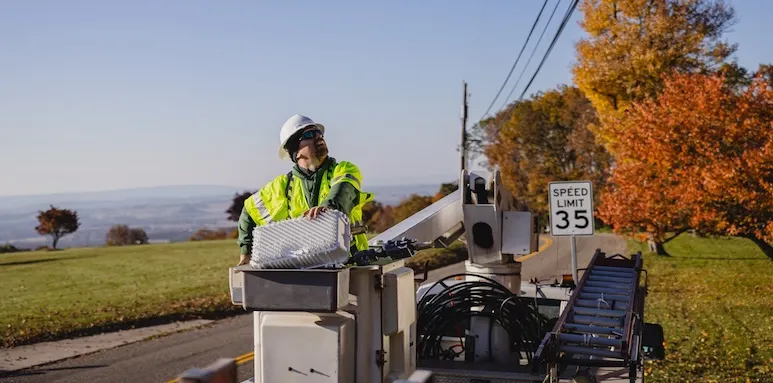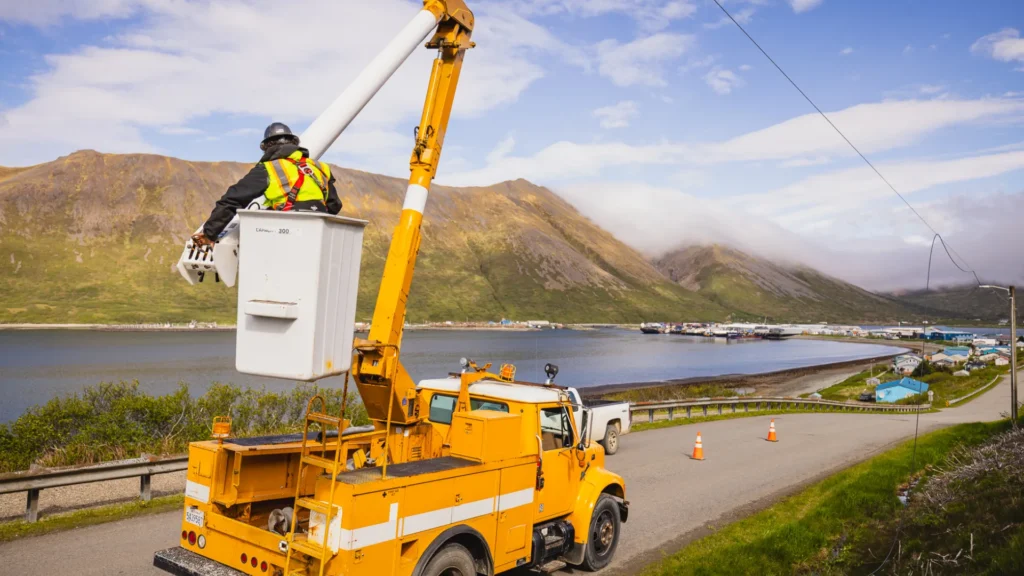One year ago, the entire world practically shut down when the COVID-19 pandemic became widespread. In the United States, lockdown orders went into effect and millions of Americans turned to the internet for telehealth visits, remote work and virtual schooling. It was then that broadband showed its true power to connect people during a time when more people than ever before went online to continue their lives in the only way they knew how.
Fortunately, cable internet service providers (ISPs) had planned ahead to ensure that their networks had the capacity to withstand the significant spike in usage. And to offer transparency to the public about the performance of their networks, ISPs also began providing their data to the NCTA COVID-19 Dashboard, which was created last March. The dashboard continues to be updated biweekly and the data has consistently revealed, since day one, the resiliency and reliability of a cable broadband connection.
As the nation reflects on the challenges of the past year, NCTA asked the chief technology officers at some of the leading ISPs in the country to share their insights on why their networks were able to perform so well during those surge periods. See highlights below from part one of NCTA’s Q&A special with CTOs from Comcast, Cox and Midco.
What went into preparing your network to face the “unknown” this past year?
 Tony Werner, Comcast
Tony Werner, Comcast
President of Technology, Product, Xperience
When we looked back at how well our network performed throughout the largest sustained traffic increase in internet history, we attribute that success to three key factors:
1. We’ve continually made significant investments in the network—more than $15 billion since 2017 alone. This has kept us well ahead of customer demand.
2. We have not only invested in speed and capacity, but also in software-based intelligence, including artificial intelligence and machine learning, to deliver instant capacity and solve many network issues before they affect our customers. These technologies were difference makers during the COVID-19 surge.
3. Finally, and most importantly, our people were the critical factor in our success during COVID. The resiliency, flexibility and commitment they demonstrated in adapting to a dramatically new work environment while ensuring that our customers never missed a beat, will be the memory that stays with me the longest from this past year.
 Kevin Hart, Cox
Kevin Hart, Cox
Executive Vice President & Chief Product and Technology Officer
Ten years ago, we created a rolling 10-year plan, something we refer to internally as Network Transformation 2.0. It’s essentially a view of the work we at Cox are going to be doing in the years to come. With that, we had always been planning for growth—both downstream and upstream— on making our network more reliable and scalable, and on improving the customer experience. We had a plan and we had been executing it. That prepared us well for the unknown in terms of the unforeseen spike in internet usage.
And, coincidentally, we had just executed a “tabletop exercise” in the fall of 2019 around a pandemic scenario. We are always performing tabletop exercises for made-up situations, and it just so happened we picked a pandemic scenario right before COVID-19 hit. The exercise did not fully encompass everything that we saw in the past year, but it meant that we had an updated playbook going into 2020 that gave us a good starting point for pandemic response. Through ongoing investment in the network and consistent business continuity planning, we were as ready as we could be for the unknown.
 Jon Pederson, Midco
Jon Pederson, Midco
Chief Technology Officer
The biggest steps in preparing our network actually began years ago as we implemented uncompromising upgrades designed to handle expected growth including a margin of error. When the spike hit, we had the capacity and monitoring in place. That made our response measured and deliberate, and we were able to seamlessly adjust in the (very) few areas that did pop up.
Are there any unique internet usage trends that you have observed that have “stuck” as a result of the pandemic environment?
Tony Werner, Comcast: Time-of-day behaviors have certainly shifted in a sustained way as a result of stay-at-home activities, as working and schooling from home has shifted upstream peak traffic from evening to daytime. But one of the things that’s most striking is what hasn’t changed.
As we detailed in our 2020 Network Report, despite growth in upstream traffic, traffic patterns have remained highly asymmetrical throughout the pandemic, as downstream traffic volume was 14 times higher than upstream traffic volume throughout 2020.
That’s because even as people increased their videoconferencing activities they are also watching a lot more video and playing a lot more games, which meant that entertainment activities continued to dominate network traffic, with video streaming accounting for 71% of all downstream traffic, growing by 70% over 2019 levels. Other key drivers of downstream traffic in 2020 were online gaming and the accompanying software downloads (10%), and web browsing (8%). Despite growth in videoconferencing traffic, it still only accounted for less than 5% of overall network usage.
Kevin Hart, Cox: The peak for data usage used to be Saturday night. We used to plan around this time, but the peak shifted towards the weekdays. In some cases, to 3pm or 4pm. Video streaming and working from home drives a lot of this activity. We have created more upstream capacity with our fifth upstream channel. Our team has also taken some of our best-in-class business products and bundled those for our residential customers to create a work-from-home solution with higher bandwidth.
Jon Pederson, Midco: There were two areas that have “stuck” as the result of the pandemic. Downstream traffic used to have a very definite peak in the evening. That peak is still there but with families at home it has flowed somewhat into the daytime too. Second was the increase in upstream traffic overall and especially during the day. This is presumably due to increased videoconferencing and file sharing with company and cloud resources.
Any other insights or observations that you can share with us?
Kevin Hart, Cox: As challenging as the past 12 months have been in many ways, there is also a silver lining. The past year has been a great accelerator for broadband and technology. The pandemic forced our industry to be even more innovative and to accelerate our platforms and its tremendous capabilities in remote and virtual worlds, including remote health care and distance learning. We’ve digitized the way we work and learn and seek medical care.
Our own business is also a microcosm of this. We’re now 100% remote on our call centers and network operations. We would have gotten there eventually, but what normally might have taken years happened in less than one week. We also hit high productivity levels and we accomplished so much during this time while working remotely. This is just one example of the kind of innovation we are going to see in the future around telecom, products and services.
Jon Pederson, Midco: I think the world has a newfound appreciation for broadband connectivity and our industry. As a group, we came together and showed that we were prepared, and can respond collaboratively to meet the needs of the day. However, we weren’t the only ones to sit up and take notice as the viability of network expansion is more attractive than ever to investors. The stakes are higher and it’s more important than ever to invest in our networks and not rest on our laurels.
Please check back next week for part two of our special Q&A series.









